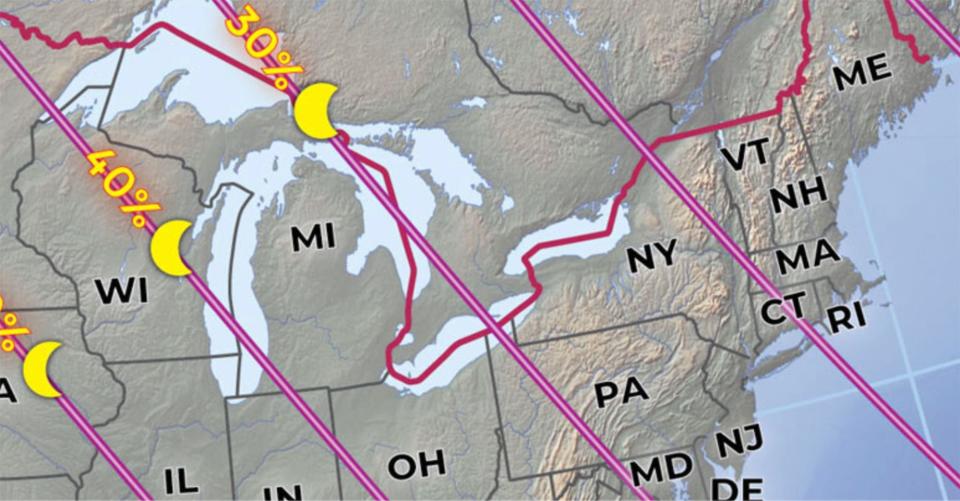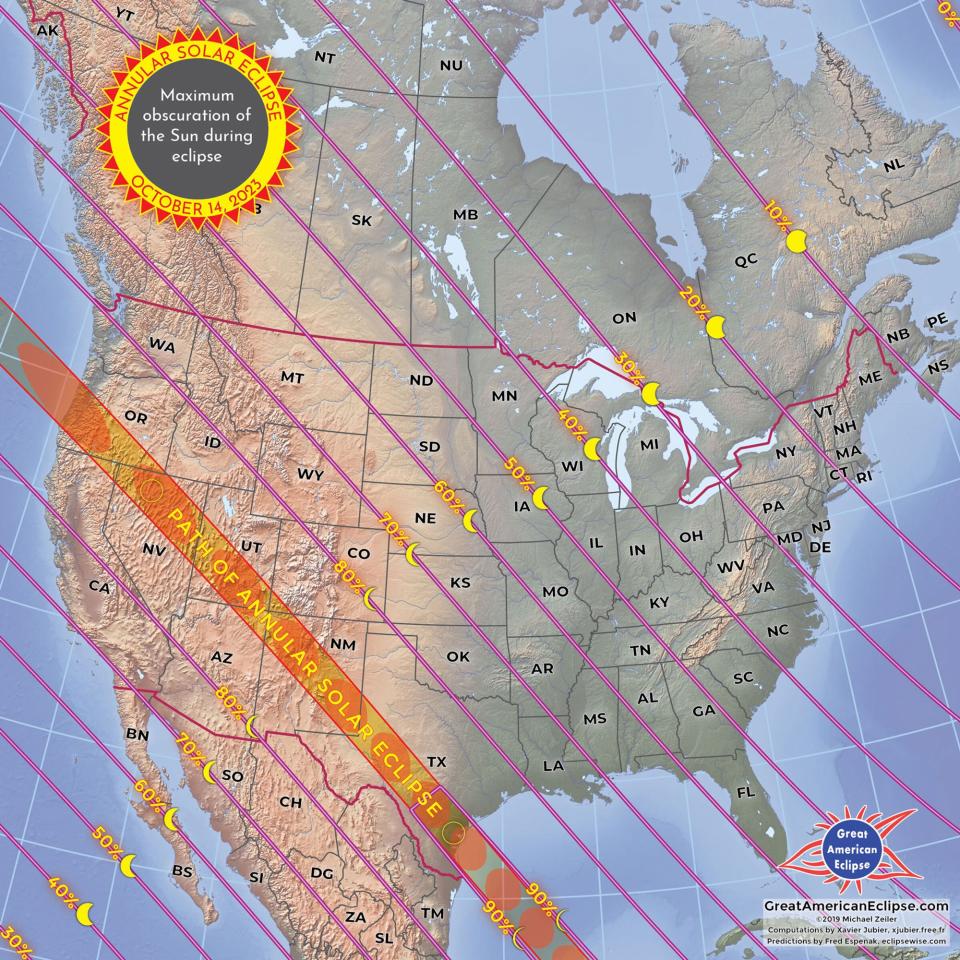A solar eclipse is coming Oct. 14. Here's what you'll be able to see from central PA
Residents in south-central Pennsylvania will have an opportunity to see part of a solar eclipse on Oct. 14 when it will look like the moon has taken a bite out of the sun.
During the annular solar eclipse, 28 percent of the sun will be blocked out by the moon in this area, said Brian Lada, a meteorologist with AccuWeather.com.
If the weather conditions are favorable, it might be a little dimmer outside, he said.
While the local area will only see a partial eclipse, those who want to see the "ring of fire" − or 90 percent of the sun blocked by the moon − will have to travel to western states, such as California, Utah or New Mexico.

When will I be able to see the partial eclipse in central Pennsylvania?
The partial eclipse will take place over a two and a half hour period on Oct. 14, Lada said.
It starts at 12:01 p.m., and it will be over at 2:36 p.m.
The best time to look will be at 1:18 p.m. That's when 28 percent of the sun will be blocked by the moon.
"It will look like a moon phase for us here," said Todd Ullery, planetarium director for the York County Astronomical Society and solar system embassador for NASA.

How to safely observe the solar eclipse without damaging your eyes
Do not look directly at the sun. It could damage your eyes.
Several ways exist to safely observe the annular solar eclipse, according to Lada, Ullery and NASA.
One is to wear special solar eclipse glasses that meet safety standards. If you have an old pair in a drawer, carefully check them to make sure they do not have scratches or pinholes that would make them unsafe.
Another would be to buy filters built for viewing the sun through an astronomy-related website, Ullery said.
Other indirect methods allow people to experience the event.
One option is to make a pinhole projector. It can be created by poking a hole in cardboard and projecting the image of the sun onto a surface, according to NASA. Viewers will be able to see the shadow of the moon moving into the path of the sun.
A pasta colander works as well for pinhole projection, and the eclipse can be seen on the ground of leafy trees as well.
NASA also will be offering a live feed of the solar eclipse for the public to watch.
https://youtu.be/LlY79zjud-Q
Don't miss the solar eclipse coming in April 2024
A spectacular event is coming next spring when a total solar eclipse will be visible on April 8, 2024.
In south-central Pennsylvania, 90 percent of the sun will be covered by the moon, Lada said.
Erie, Pa. will be one of the spots in the path of totality for that event, he said.
Check out the stars with the York County Astronomical Society
The York County Astronomical Society offers star watches and planetarium shows.
The planetarium at the York Learning Center offers shows for children as well as adults. It is located at 301 E. Sixth Ave. in North York.
A pubic star watch will be held from 8 p.m. to 10 p.m. Oct. 14 at John C. Rudy Park in East Manchester Township.
This article originally appeared on York Daily Record: Solar eclipse coming Oct. 14. What you can see in central PA

